Abstract
Rabies virus produced in duck embryo cell culture was concentrated from volumes of 14 to 30 liters to 400 to 800 ml by zonal centrifugation. Virus titers of peak fractions were from 100- to 1,000-fold greater than those of the starting material. Vaccines were prepared by combining fractions with peak virus titers and diluting back to 10 times concentration. The resulting β-propiolactone-inactivated vaccines, when prepared as lyophilized vaccines with AlPO4 adjuvant diluents, were low in protein nitrogen (0.01 mg/ml), and three of four lots passed the National Institutes of Health potency test when tested as equivalent to a standard 10% suspension of duck embryo or mouse brain tissue vaccine. These vaccines also induced good sero-conversion in adult rabbits after a single 1-ml dose of vaccine. Guinea pigs sensitized with zonal-centrifuged purified duck embryo vaccine (with AlPO4 adjuvant) did not exhibit anaphylactic shock reactions when challenged with homologous vaccine. Also, no anaphylactic shock reactions were observed when guinea pigs were sensitized with either a 10% experimental duck embryo vaccine or cell culture vaccine and then challenged with the zonal-purified vaccine. However, guinea pigs sensitized with cell culture or zonal-purified vaccine and then challenged with the 10% experimental vaccine did show slight transitory congestion. The 10% experimental whole duck embryo vaccine was responsible for all observed anaphylactic shock reactions whether homologous or heterologous.
Full text
PDF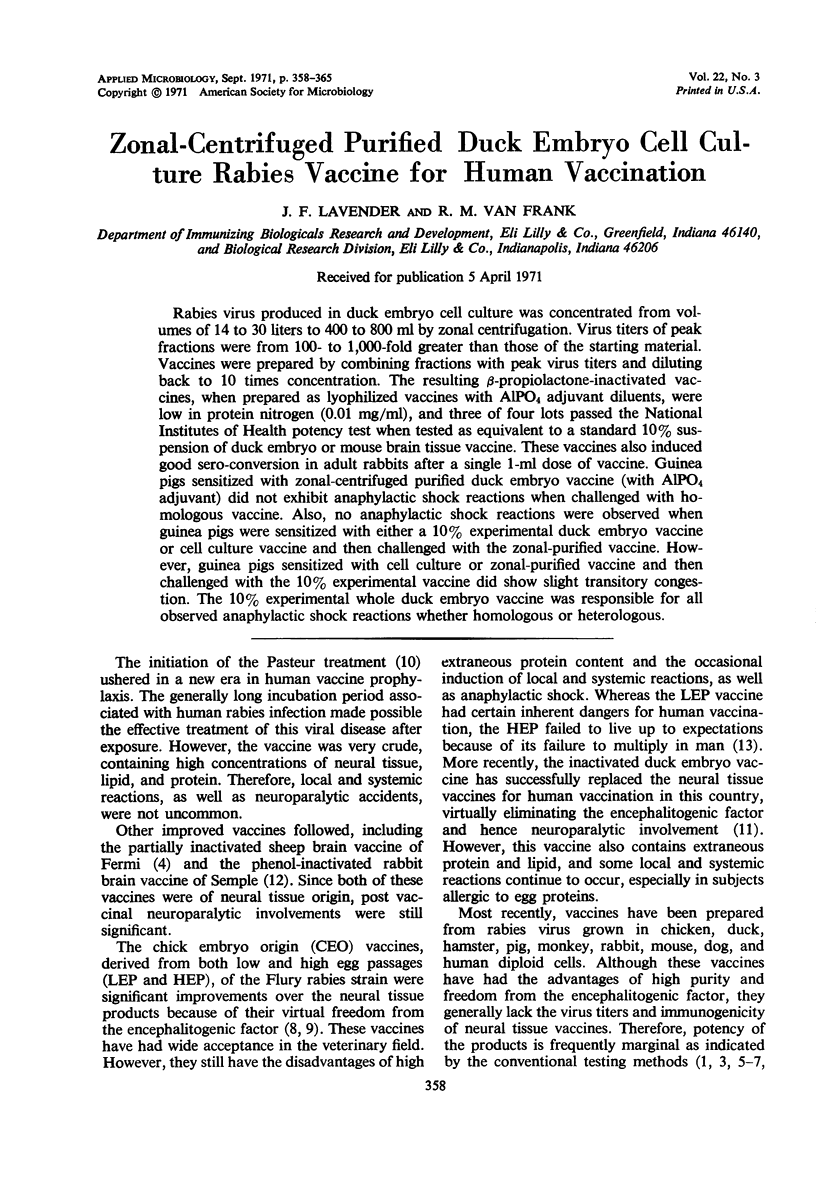
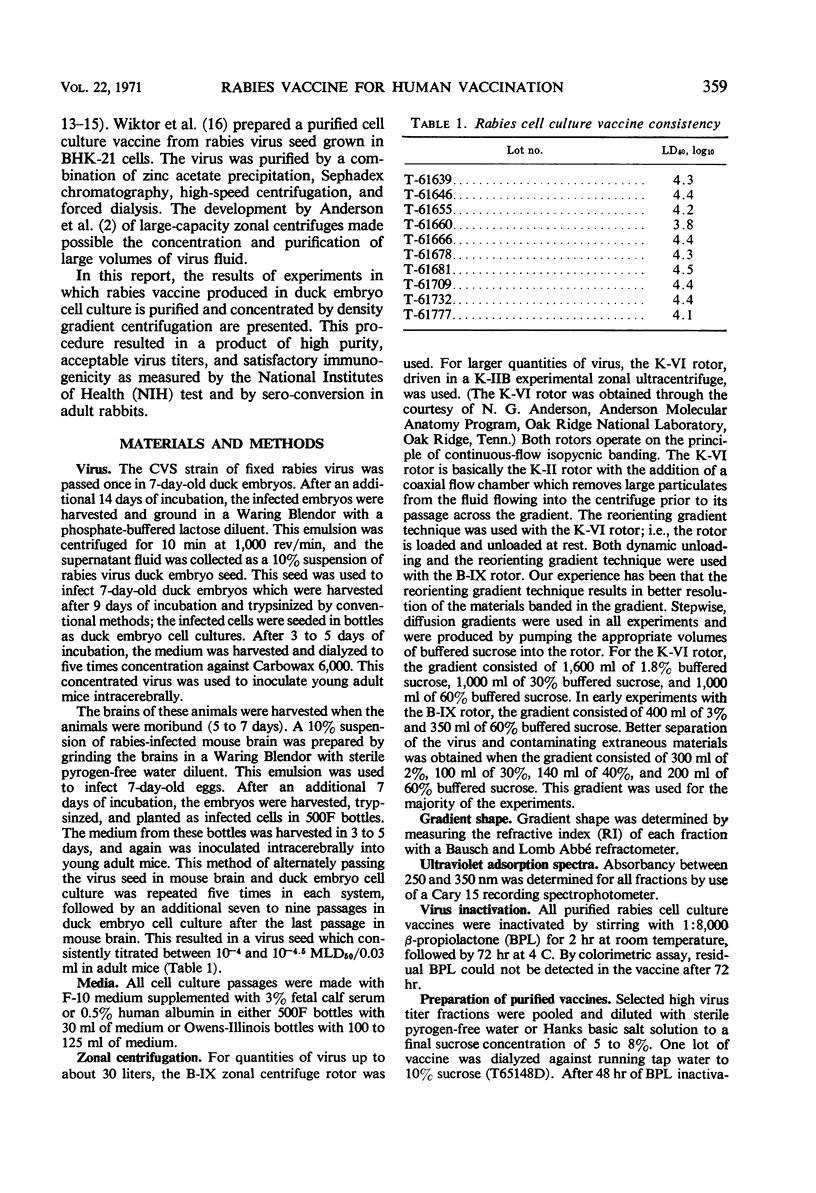
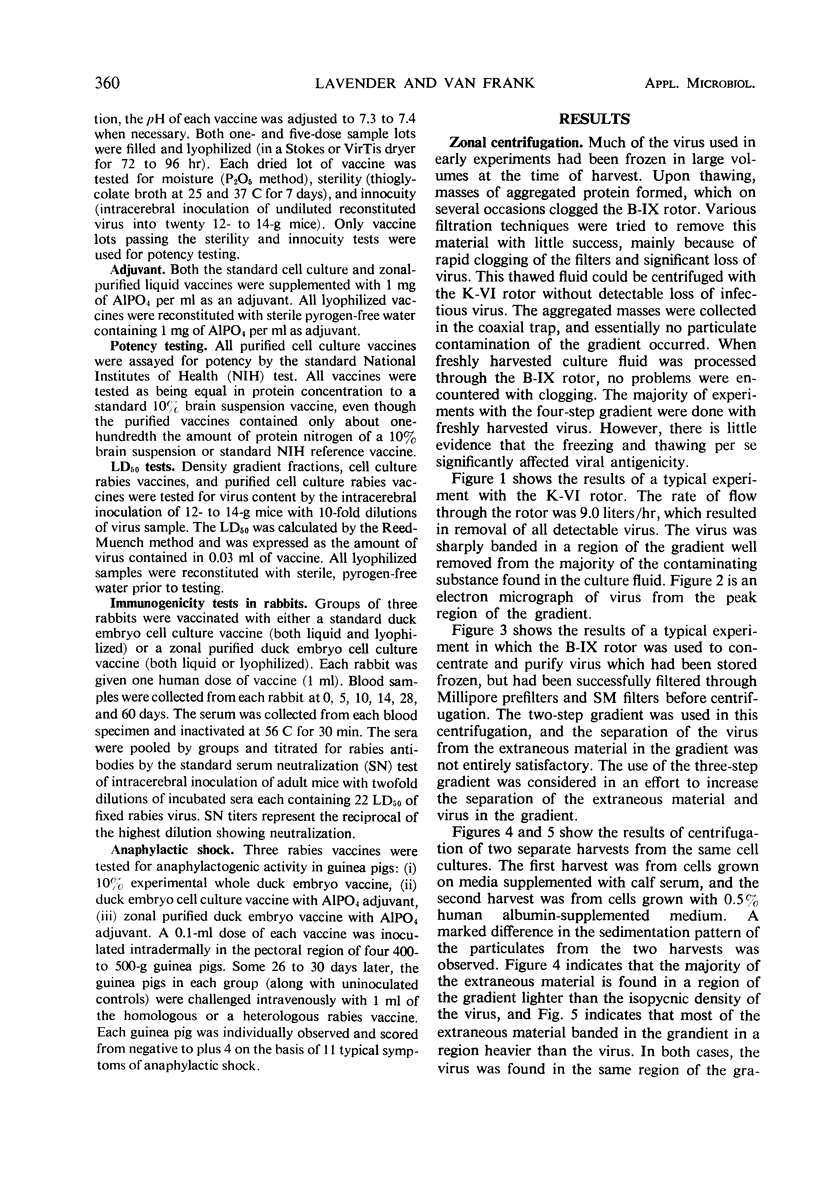
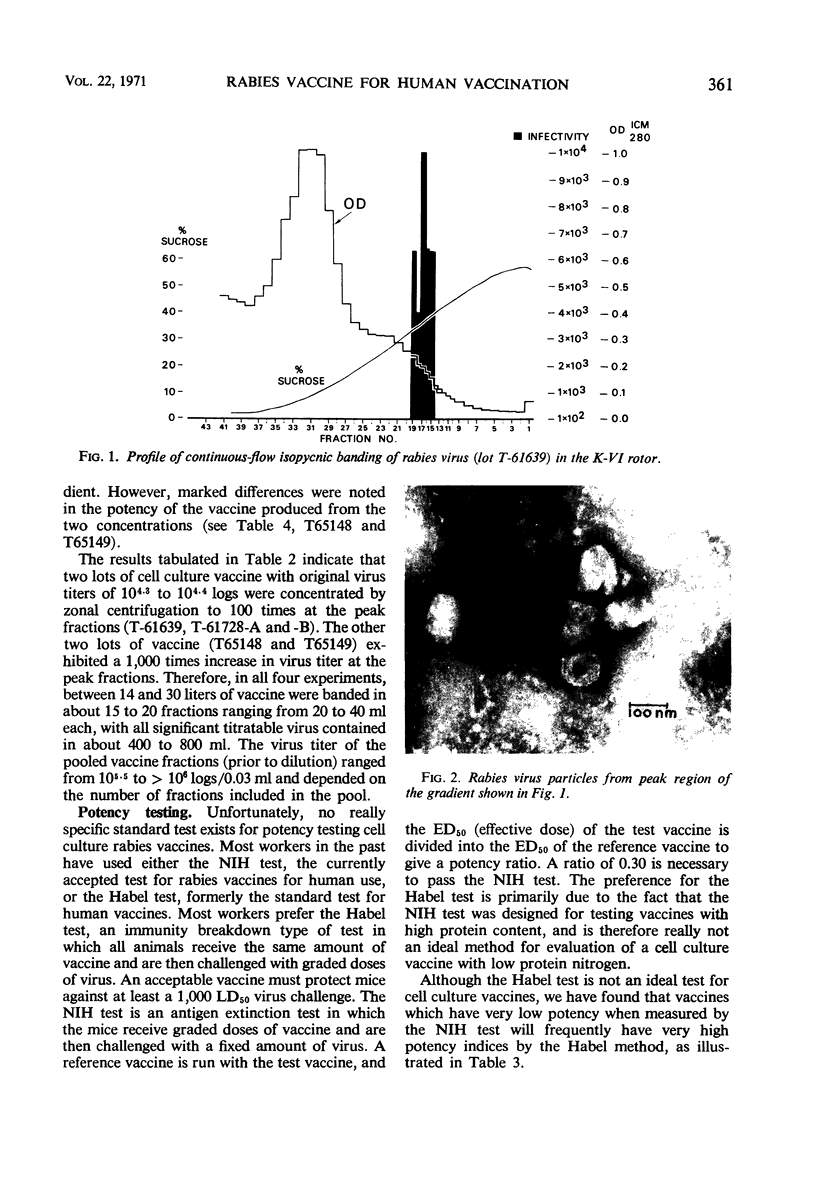
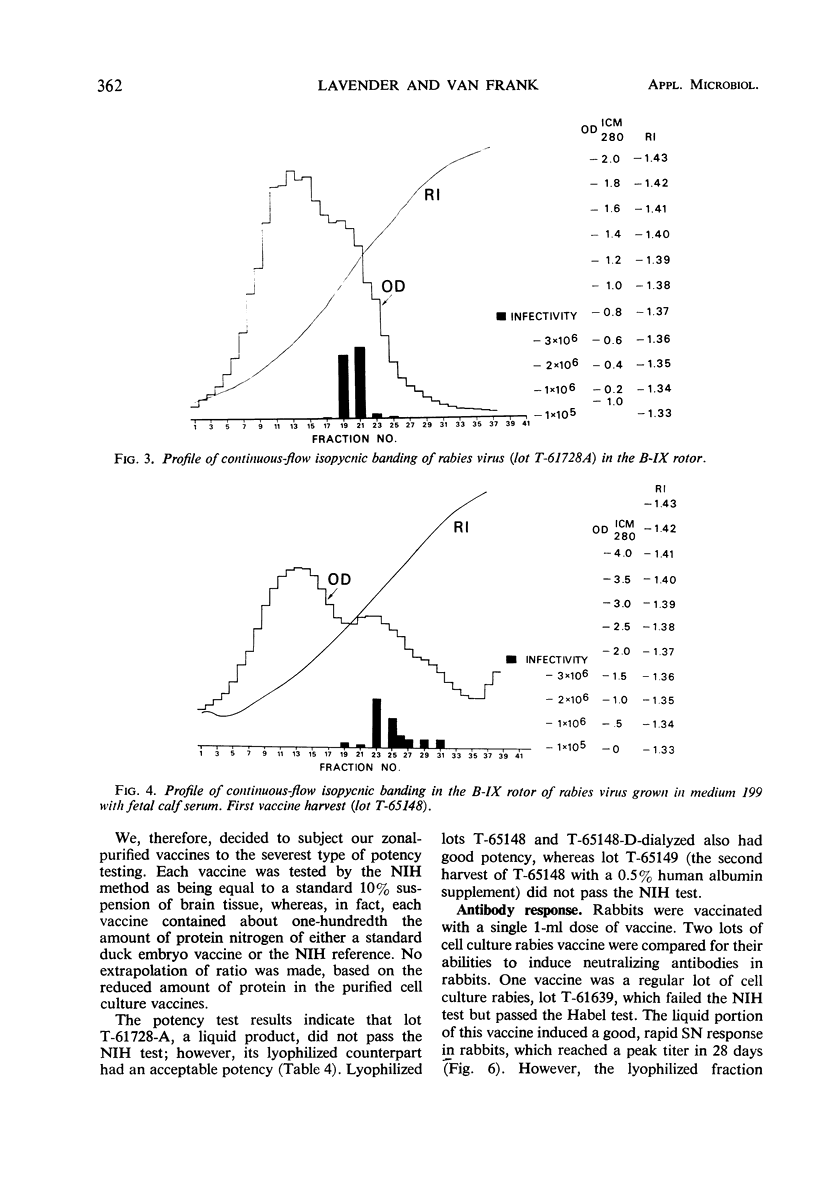
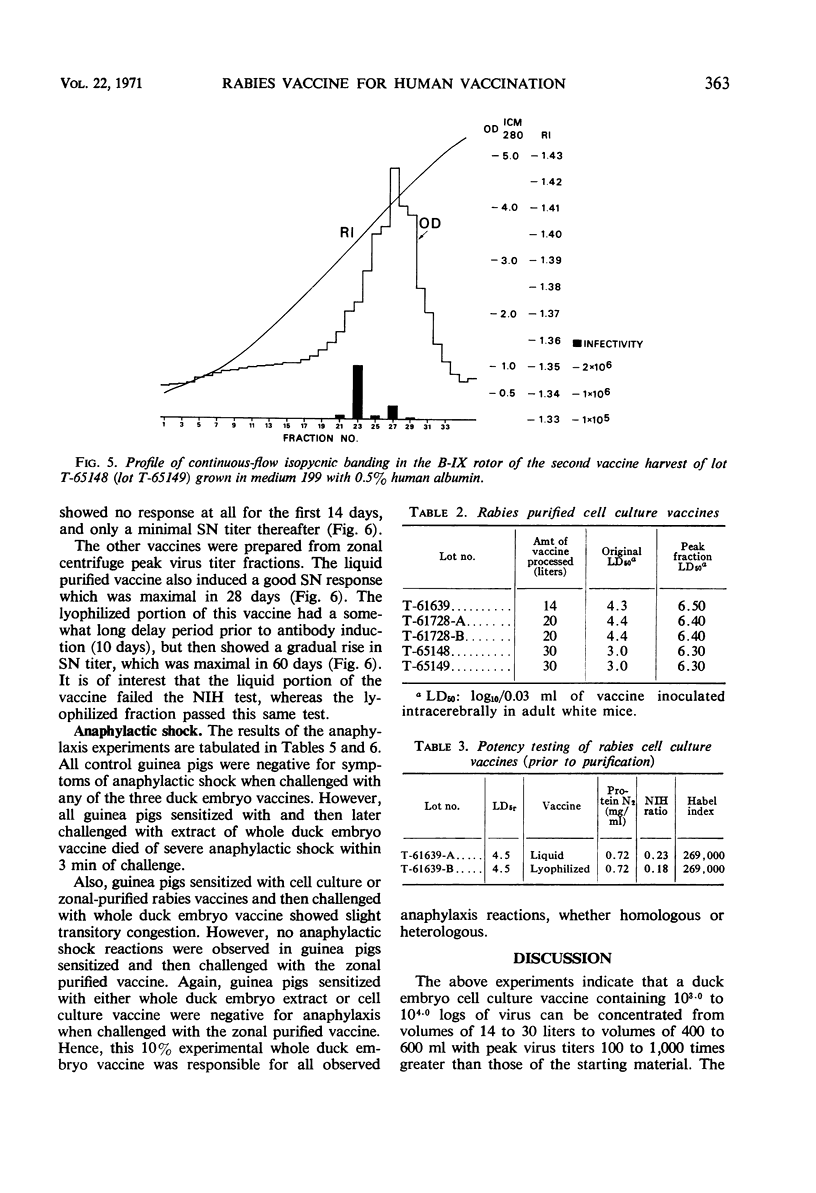
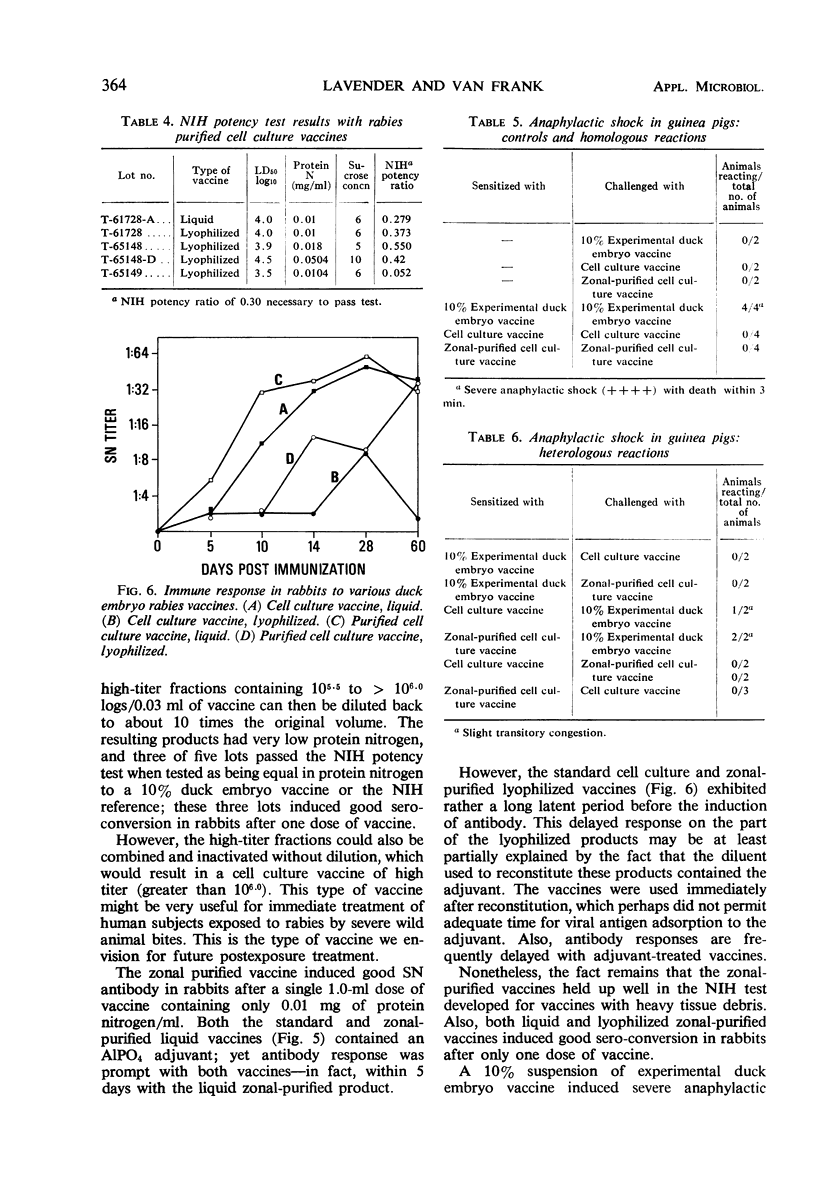
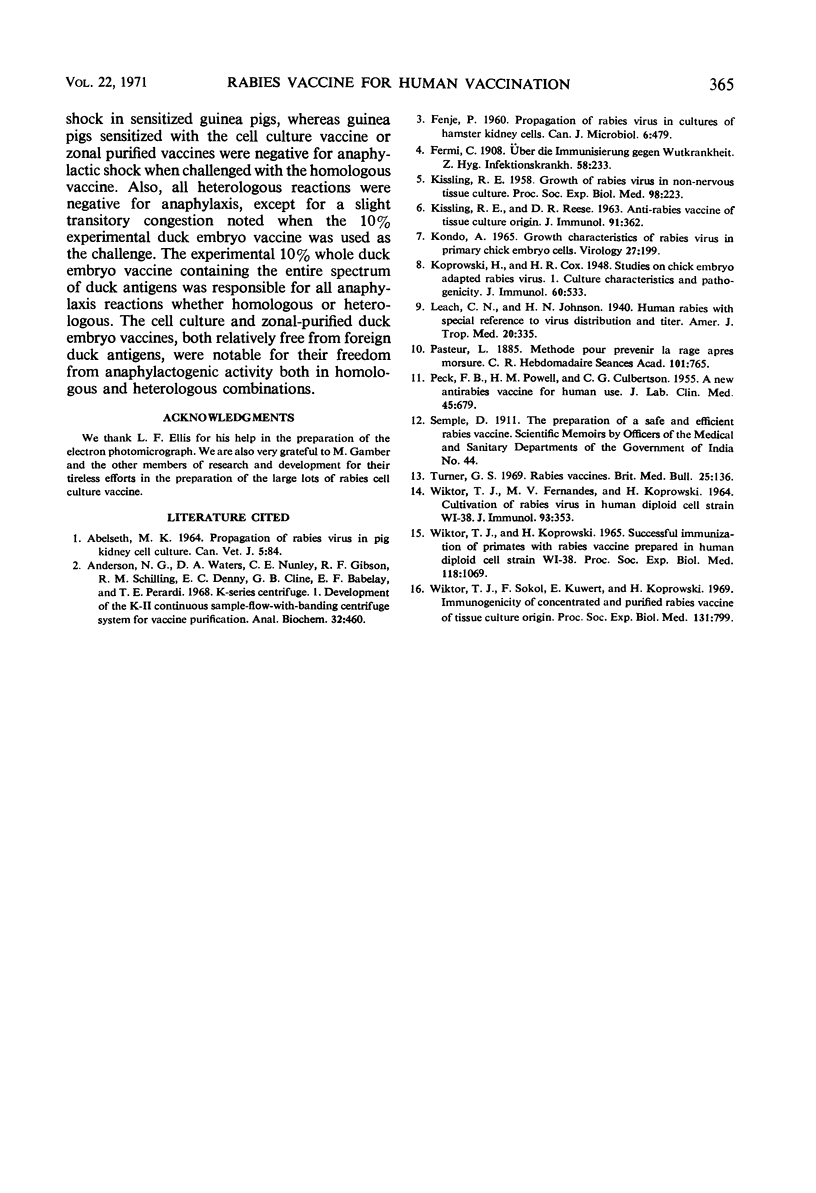
Images in this article
Selected References
These references are in PubMed. This may not be the complete list of references from this article.
- Abelseth M. K. Propagation of Rabies Virus in Pig Kidney Cell Culture. Can Vet J. 1964 Apr;5(4):84–87. [PMC free article] [PubMed] [Google Scholar]
- Anderson N. G., Waters D. A., Nunley C. E., Gibson R. F., Schilling R. M., Denny E. C., Cline G. B., Babelay E. F., Perardi T. E. K-series centrifuges. I. Development of the K-II continuous-sample-flow-with-banding centrifuge system for vaccine purification. Anal Biochem. 1969 Dec;32(3):460–494. doi: 10.1016/s0003-2697(69)80014-x. [DOI] [PubMed] [Google Scholar]
- FENJE P. Propagation of rabies virus in cultures of hamster kidney cells. Can J Microbiol. 1960 Oct;6:479–484. doi: 10.1139/m60-055. [DOI] [PubMed] [Google Scholar]
- KISSLING R. E. Growth of rabies virus in non-nervous tissue culture. Proc Soc Exp Biol Med. 1958 Jun;98(2):223–225. doi: 10.3181/00379727-98-23997. [DOI] [PubMed] [Google Scholar]
- KISSLING R. E., REESE D. R. ANTI-RABIES VACCINE OF TISSUE CULTURE ORIGIN. J Immunol. 1963 Sep;91:362–368. [PubMed] [Google Scholar]
- Kondo A. Growth characteristics of rabies virus in primary chick embryo cells. Virology. 1965 Oct;27(2):199–204. doi: 10.1016/0042-6822(65)90160-1. [DOI] [PubMed] [Google Scholar]
- PECK F. B., Jr, POWELL H. M., CULBERTSON C. G. A new antirabies vaccine for human use; clinical and laboratory results using rabies vaccine made from embryonated duck eggs. J Lab Clin Med. 1955 May;45(5):679–683. [PubMed] [Google Scholar]
- Turner G. S. Rabies vaccines. Br Med Bull. 1969 May;25(2):136–142. doi: 10.1093/oxfordjournals.bmb.a070682. [DOI] [PubMed] [Google Scholar]
- WIKTOR T. J., FERNANDES M. V., KOPROWSKI H. CULTIVATION OF RABIES VIRUS IN HUMAN DIPLOID CELL STRAIN WI-38. J Immunol. 1964 Sep;93:353–366. [PubMed] [Google Scholar]
- WIKTOR T. J., KOPROWSKI H. SUCCESSFUL IMMUNIZATION OF PRIMATES WITH RABIES VACCINE PREPARED IN HUMAN DIPLOID CELL STRAIN WI-38. Proc Soc Exp Biol Med. 1965 Apr;118:1069–1073. doi: 10.3181/00379727-118-30048. [DOI] [PubMed] [Google Scholar]
- Wiktor T. J., Sokol F., Kuwert E., Koprowski H. Immunogenicity of concentrated and purified rabies vaccine of tissue culture origin. Proc Soc Exp Biol Med. 1969 Jul;131(3):799–805. doi: 10.3181/00379727-131-33981. [DOI] [PubMed] [Google Scholar]



